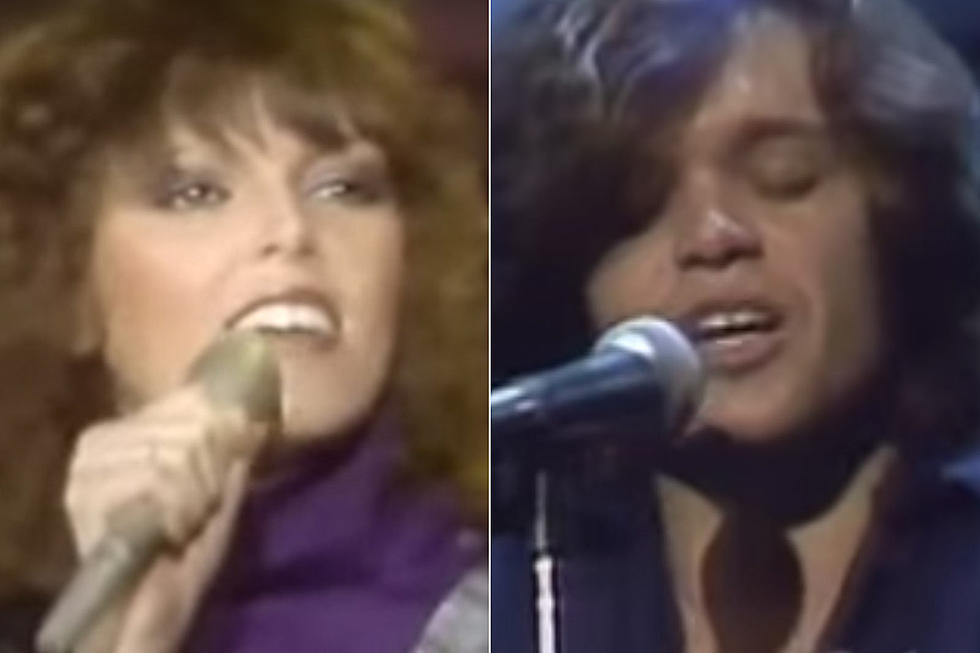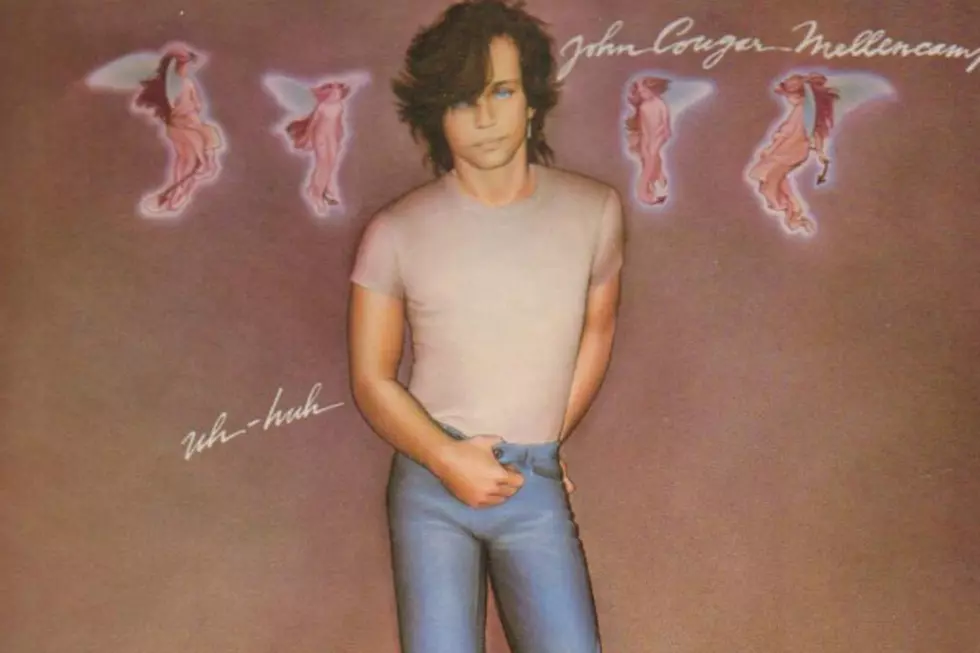
How Pat Benatar Helped Rescue John Mellencamp’s Career
Changing his name didn't help. By the time John Mellencamp issued a second album, his career was stalled anyway. Then he notched a sizable hit when "I Need a Lover," in faraway Australia of all places.
"When I landed, there were kids – a bunch of screaming girls, and some guys with a haircut just like mine – waiting for me," Mellencamp remembered on Plain Spoken: From the Chicago Theatre. "I couldn't even get picked up in Bloomington [Ind.], where I lived, if I was hitchhiking. I couldn't even take it seriously; it was a joke. I thought it was an isolated incident."
It wasn't, of course, but that doesn't mean there weren't plenty of struggles still ahead. He'd also need a little help from Pat Benatar.
"I was washed up and over by my mid-20s," Mellencamp told Rolling Stone in 2013. "Then two record producers named [Nicky] Chinn and [Mike] Chapman heard 'I Need a Lover,' and they had Pat Benatar sing it."
Suddenly, Mellencamp was on his way. Benatar's album went platinum, giving the struggling singer-songwriter a needed cash infusion. His label smartly attached "I Need a Lover" onto his third record John Cougar, which was issued July 27, 1979. The re-released Mellencamp version broke the Top 30, and he notched his first-ever charting Billboard album.
As with everything in Mellencamp's early years, it just took a while.
Born in the small-town Midwest as the second of five children, Mellencamp had been in search of this moment since he was a kid. Despite getting married in high school and fathering a child at 19, he was off in search of a new life – either in art or music – by the time he was 21.
"It turned out that the New York Art Student League wanted money, but the record company wanted to give me money!" Mellencamp told CBS in 2018. "I ended up getting a record deal like that. I interviewed the head of a record company and he [signed Mellencamp] within minutes. With the most humility, I say that's what happened to me. They didn't even listen to the demo tape!"
Listen to Pat Benatar's Version of 'I Need a Lover'
Ironically, that's when things started getting hard. First, former David Bowie manager Tony DeFries saddled him with a corny stage name, then the label commenced in turning him into a stylized rebel. Not the rebel that Mellencamp actually was – he been through a series of bar bands and glitter-rock groups, which was where he met long-time guitarist Larry Crane – but a quote-unquote version that attempted an awkward combination of the images of Bowie and Bruce Springsteen.
It didn't go well. At one point, he was reduced to playing under the bleachers in a broken-down soccer stadium as part of a 1978 U.K. "tour." Angry and depressed, Mellencamp felt his dream slipping away right before his eyes. "We were in a room that was like a refreshment stand," Crane told Rolling Stone in 1986. "You wonder why John was miserable then?"
He was actually in the studio cutting 1980's aptly titled follow up Nothin' Matters and What If It Did, literally a last-chance album, when "I Need a Lover" hit Down Under. All of a sudden, people were taking another look at John Cougar.
In truth, the rest of his 1979 album was more transitional than revelatory, as Mellencamp added a few ratty Faces-style rock touches. There were flashes of the narrative style that would propel albums like 1986's Scarecrow and 2007's Freedom's Road, but it was still decidedly embryonic.
"I enjoyed the attention that telling stories would bring as a child," Mellencamp told UPI in 1987. "I used to like to captivate people with stories, even lying like a son of a gun about them – just taking a story and making stuff up. That's how I figured out that if I could put these lies down on paper, I'd really have something. And that's how my songwriting began. It wasn't very heartfelt; it's just what I thought would be interesting."
Listen to John Mellencamp Perform 'I Need a Lover'
Still, with this new momentum, Mellencamp could finally set about building on that youthful promise. It took one more album to figure everything out, then 1982's American Fool became a star-making smash.
"I had to make records that they would play on the radio that were undeniable hits," Mellencamp later mused. "I didn't know how to do that. I got lucky with 'I Need a Lover,' but how do I do that again? I had no idea. The only way I knew I was going to survive was to become so radio-friendly that there was no way anybody could stop me from moving onward."
A few years later, songs like "Hurts So Good" and "Jack and Diane" did just that. Once he conquered the charts, Mellencamp felt ready to take back his own name – a plan he'd had since discovering the switch when MCA mailed out his poorly received debut.
"I was 22 years old. Back then, I listened to every suggestion," Mellencamp told UPI. "I was thinking these people are in the music business and I'm not, I'd better pay attention. Some guy would throw off an offhanded comment and I would take it to heart, whether it be about songwriting, production, or image. Then one day I woke up and realized that listening to these people has gotten me nowhere. I'm further away from what I wanted to do than I'd ever been."
He followed American Fool with 1983's Uh-Huh, which was credited to John Cougar Mellencamp. In 1991, he issued Whenever We Wanted as the first album without any reference to Cougar. Nevertheless, he still hasn't completely shaken the hated stage name.
"It will never leave," Mellencamp told NPR in 2010. "I still walk down the street and people would say, 'Hey, John Cougar.' You know, I hear it all the time. Or John Cougar Mellencamp — I'll be introduced that way. But as you know, that's what it was. I mean, that's what people knew me as at that time, and that's — you know, that's just the fate."
See John Mellencamp Among Rock’s Most Underrated Albums
More From Ultimate Classic Rock









